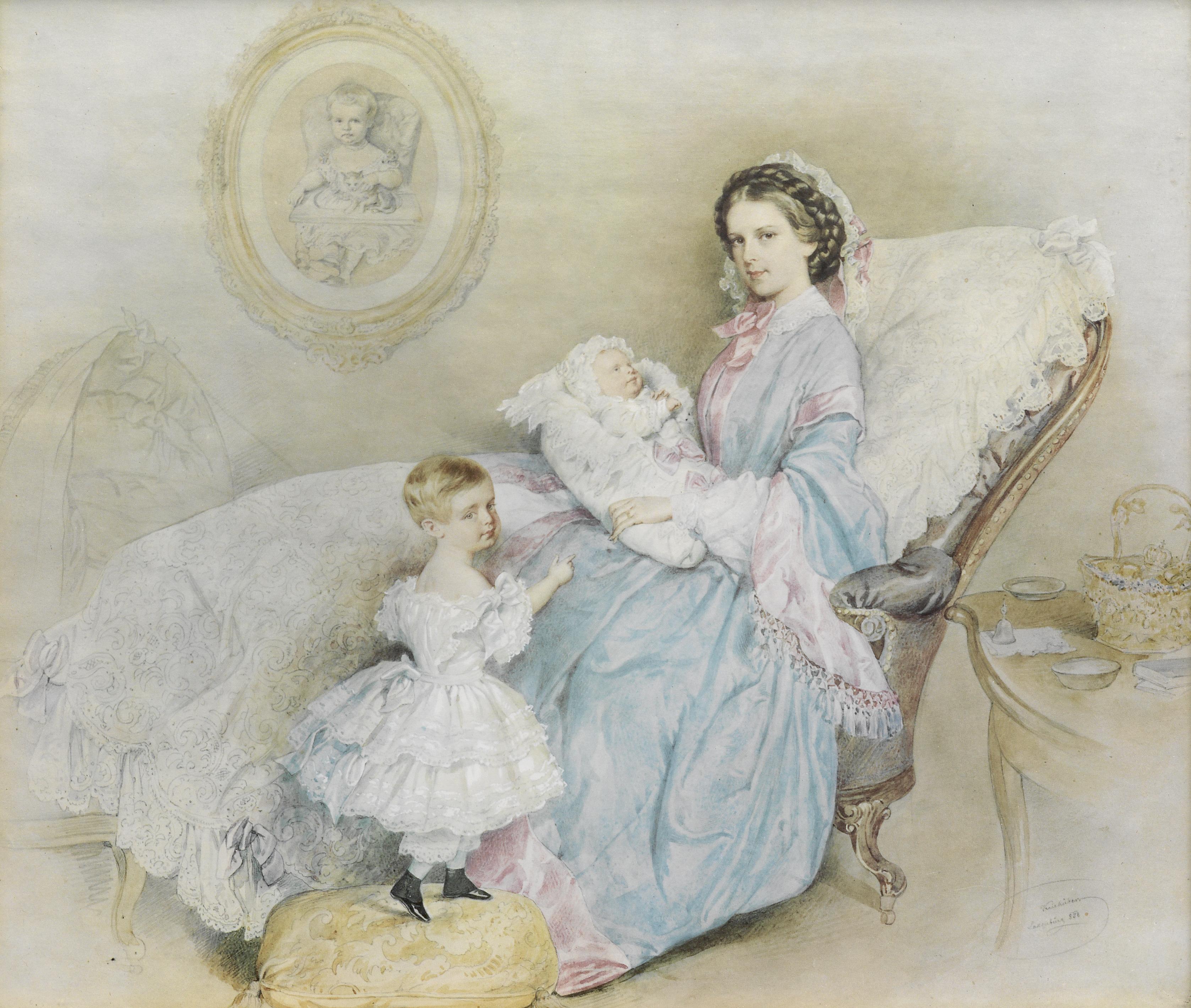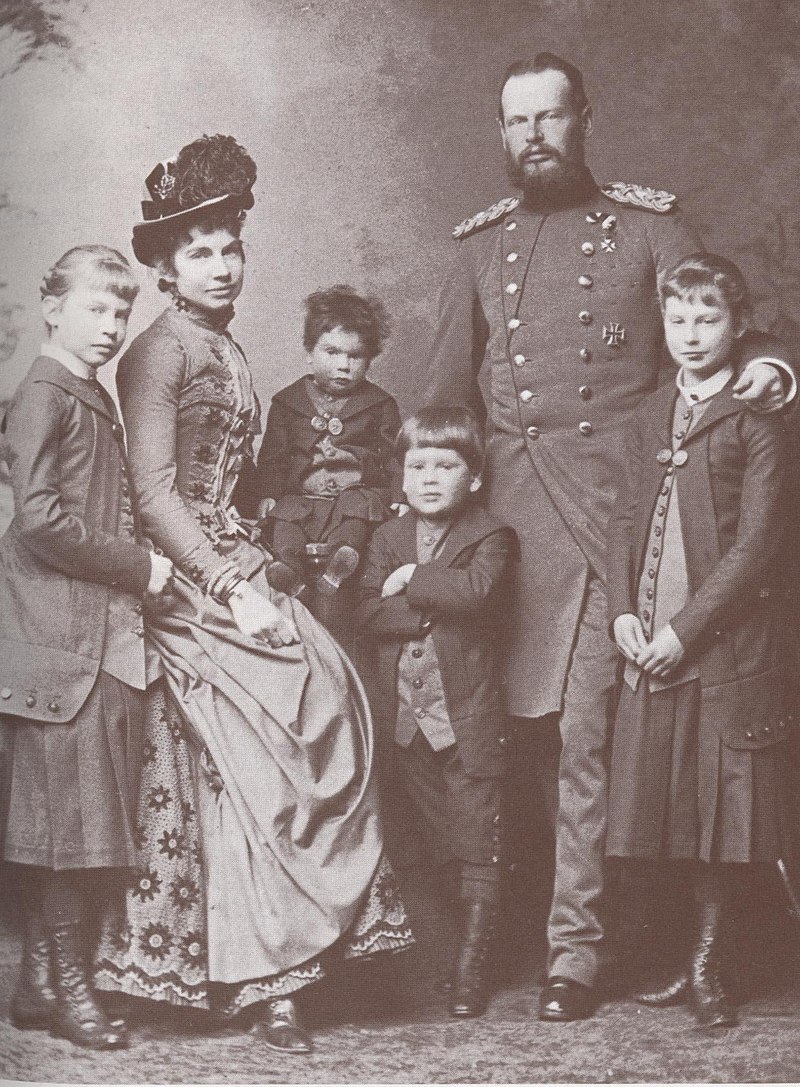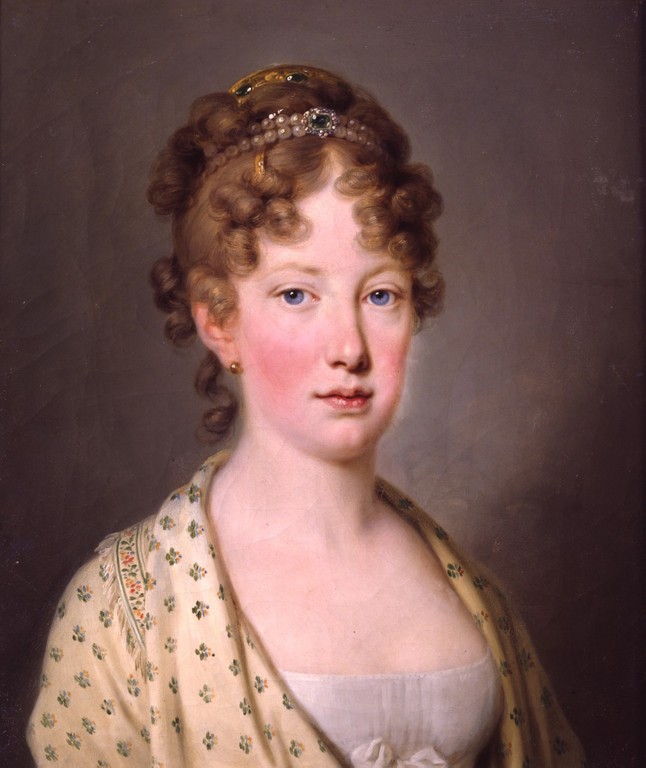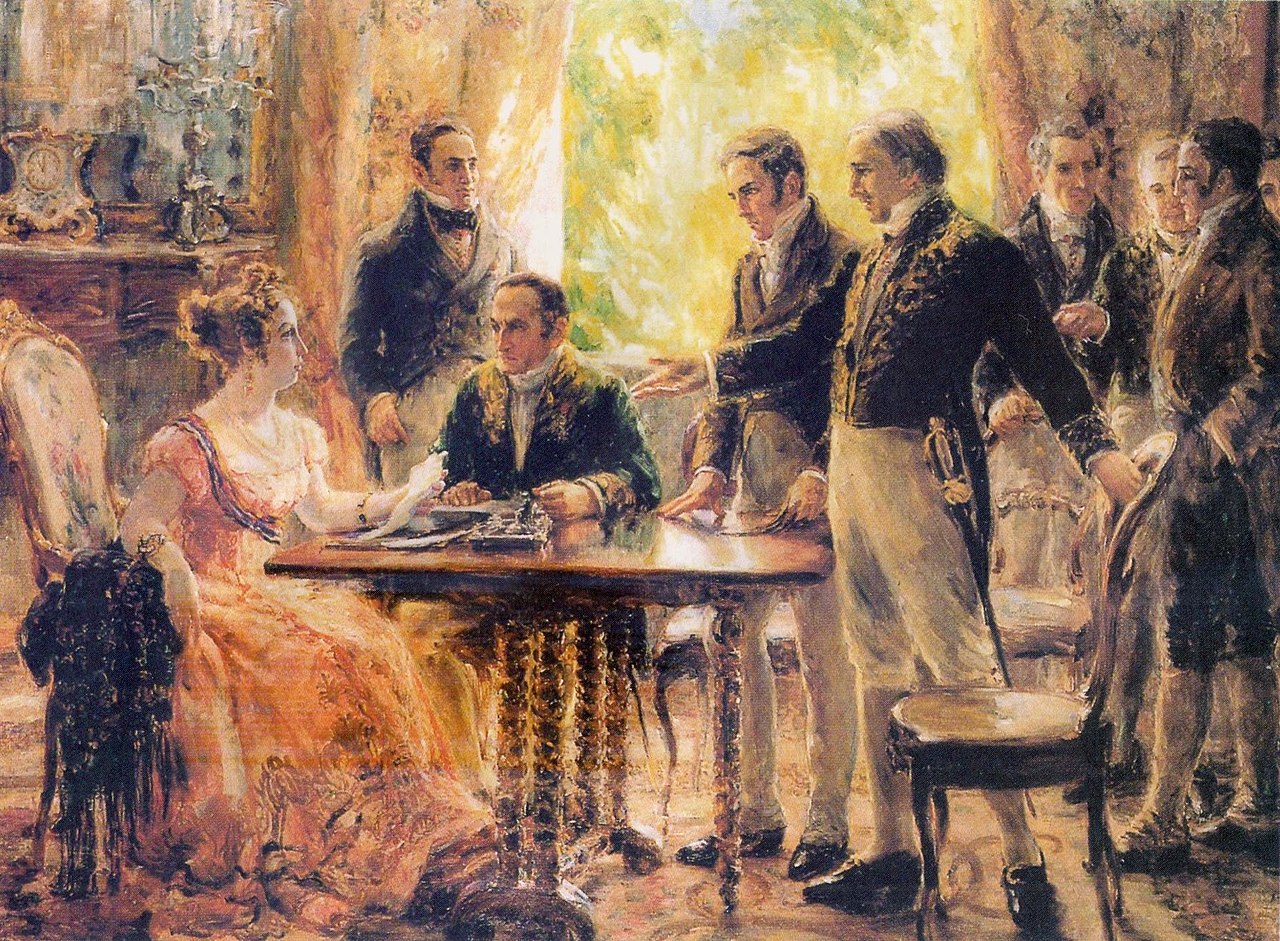by Susan Flantzer © Unofficial Royalty 2018

Crown Prince Rudolf of Austria; Credit – Wikipedia
Known for ending his life in a suicide pact with his mistress Baroness Mary Vetsera at the Mayerling hunting lodge, which this writer has visited, His Imperial and Royal Highness The Crown Prince of Austria, Hungary, Bohemia, and Croatia, Rudolf Franz Karl Joseph, was the only son of Franz Joseph, Emperor of Austria and his wife Elisabeth of Bavaria (Sisi). He was born at Schloss Laxenburg, the summer retreat of the Habsburgs near Vienna, on August 21, 1858.
Rudolf had three sisters, one who was born and died before his birth, an elder sister, and a younger sister:
- Archduchess Sophie (1855 – 1857), died in childhood
- Archduchess Gisela (1856 – 1932), married Prince Leopold of Bavaria, had four children
- Archduchess Marie Valerie (1868 – 1924), married Archduke Franz Salvator, Prince of Tuscany, had ten children
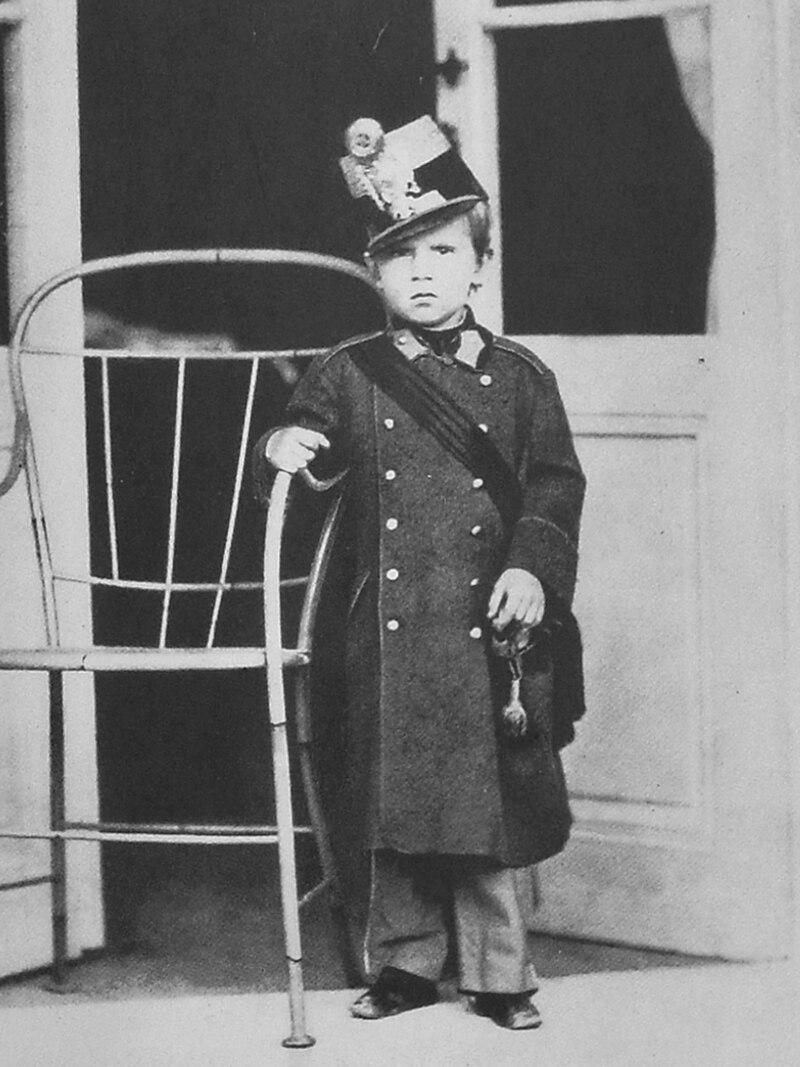
Crown Prince Rudolf on his fourth birthday; Credit – Wikipedia
Rudolf was first educated by Count Leopold Gondrecourt. His grandmother Archduchess Sophie had chosen the best tutors for Rudolf but instead, Emperor Franz Joseph chose a military tutor. Gondrecourt’s methods of turning the small boy into a brave man included waking up Rudolf by shooting a pistol in his bedroom, locking him in a game preserve, and then telling him a wild boar was coming. One day, Empress Elisabeth woke up to the sound of shouting. Looking out her window, she saw Gondrecourt drilling Rudolf in the snow. Elisabeth was determined to have Rudolf’s tutor removed and eventually, she was successful but the mental damage that Gondrecourt inflicted on Rudolf could not be undone.
Colonel Joseph Latour von Thurnberg, a gentler tutor, was hired and Rudolf’s educational regime was much more relaxed. Rudolf’s new tutor understood the importance of mental stimulation. Rudolf enjoyed science, particularly ornithology, the study of birds. When he was 20 years old, zoologist Alfred Brehm took Rudolf on a trip to observe the animal and birdlife along the Danube River. With the assistance of Brehm, Rudolf wrote and published “ Fünfzehn Tage auf der Donau” (Fifteen Days on the Danube).
In 1878, when Rudolf finished his studies, he moved to Prague where he served in an infantry regiment. Rudolf hated military discipline and considered the military appointments of Imperial Family members to be meaningless. Nevertheless, he progressed through the military ranks: 1878 Colonel, 1880 Major, 1882 Field Marshal, and 1888 General Infantry Inspector.

Rudolf and Stéphanie’s official engagement photograph; Credit – Wikipedia
The royal courts of Belgium and Austria planned Rudolf’s marriage. As the only son of Emperor Franz Joseph I, he was under pressure to marry. Princess Stéphanie of Belgium, daughter of King Leopold II of the Belgians and Archduchess Marie-Henriette of Austria, still a teenager and Roman Catholic, met the criteria of the Emperor. However, the Empress thought Stéphanie was not good enough for her son because the Belgian monarchy had existed only since 1830. Nevertheless, during a trip to Belgium in March 1880 at the invitation of King Leopold II, Rudolf proposed to Stéphanie to the great joy of her parents. Stéphanie was sent to Vienna to learn the etiquette of the imperial court, but within the month, her ladies-in-waiting realized that she had not yet reached puberty. Stéphanie suffered great humiliation as the wedding was postponed and she was sent back to Belgium. Eventually, the couple married on May 10, 1881, at the Augustinerkirche, the parish church of the Imperial Court of the Habsburgs, a short walk from Hofburg Palace in Vienna, Austria. Stéphanie was not quite 17-years-old and Rudolf was 22-years-old.
Stéphanie and Rudolf had one child:
- Archduchess Elisabeth Marie of Austria (1883 – 1963), married (1) Prince Otto of Windisch-Graetz, had four children, divorced (2) Leopold Petznek, no issue

Stéphanie and her daughter Elisabeth Marie; Credit – Wikipedia
The marriage was happy at first, but shortly after the birth of their daughter, the relationship between Stéphanie and Rudolf began to deteriorate. Rudolf likely infected Stéphanie with a sexually transmitted disease, causing her to be infertile and unable to provide a male heir for the Austrian throne. Both Stéphanie and Rudolf began affairs with other people in the following years and intermittently spoke of divorce.

Baroness Mary Vetsera, Rudolf’s mistress; Credit – Wikipedia
On January 30, 1889, at Mayerling, a hunting lodge in the Vienna Woods that Rudolf had purchased, 30-year-old Rudolf shot his 17-year-old mistress Baroness Mary Vetsera, and then shot himself in an apparent suicide plot. Rudolf wrote in his farewell letter to his wife Stéphanie: Dear Stéphanie! You are free from my presence and plague; be happy in your way. Be good for the poor little one, who is the only thing left of me.
When the bodies were found, the national security services sealed off the hunting lodge and the surrounding area. The body of Baroness Mary Vetsera was quietly taken out of Mayerling in the middle of the night and secretly buried in the village cemetery at nearby Heiligenkreuz. An official statement was released saying that Rudolf had died “due to a rupture of an aneurysm of the heart”. Eventually, another statement was released stating that Rudolf had first shot the baroness in a suicide pact and sat by her body for several hours before shooting himself. The police closed their investigations quite quickly, in response to Emperor Franz Joseph’s wishes.

Baroness Mary Vetsera’s current grave in Heilingenkreuz, Austria. Her remains were disinterred twice and were finally reburied here in 1993; Credit – Von Peterpol48 – Eigenes Werk, CC BY-SA 4.0, https://commons.wikimedia.org/w/index.php?curid=35429380
Suicide would have prevented Rudolf from being given a Roman Catholic burial. A special dispensation was obtained from the Vatican that declared Rudolf to have been in a state of “mental imbalance” so he could be buried in the Imperial Crypt under the Capuchin Church in Vienna. The possibility of a state funeral was out of the question and Emperor Franz Joseph requested that no foreign royalty come to Vienna. King Leopold II and Queen Marie-Henriette of Belgium, the widowed Stéphanie’s parents, were the only foreign royalty to ignore this request.

Crown Prince Rudolf in a bed for private viewing by his family at the Hofburg Palace in Vienna. His head had to be bandaged to cover gunshot wounds; Credit – Wikipedia
Empress Elisabeth, Crown Princess Stéphanie, and Archduchess Marie Valerie (Rudolf’s younger sister) did not attend the funeral. Six family members were chosen to accompany Emperor Franz Joseph into the crypt where Rudolf would be buried: Rudolf’s paternal uncles Archduke Karl Ludwig and Archduke Ludwig Viktor, Rudolf’s brother-in-law Prince Leopold of Bavaria, Rudolf’s future brother-in-law Archduke Franz Salvator, Rudolf’s cousin Archduke Franz Ferdinand and Prince Philipp of Saxe-Coburg and Gotha, Crown Princess Stéphanie’s brother-in-law and a close friend of Rudolf who was one of the people to discover the bodies. There, in the crypt, they witnessed the Emperor become the grieving father, breaking down and sobbing uncontrollably. Rudolf’s parents would eventually be buried in the same crypt.

Empress Elisabeth’s tomb is to the left of Emperor Franz Joseph’s tomb and Crown Prince Rudolf’s tomb is on the right; Photo Credit – Susan Flantzer
Rudolf had no sons, so the succession would pass to Emperor Franz Joseph’s brother Archduke Karl Ludwig and his eldest son, Archduke Franz Ferdinand. In a matter of days, Archduke Karl Ludwig renounced his succession rights in favor of his son Archduke Franz Ferdinand, whose assassination in 1914 sparked World War I. The custody of Rudolf’s daughter Elisabeth Marie was taken over by her grandfather Emperor Franz Joseph. Elisabeth Marie remained close to her grandfather until he died in 1916. Following her mother’s remarriage to a Hungarian count in 1900, Elisabeth broke off all contact with her mother. Upon Franz Joseph’s death, his great-nephew reigned as Karl I until November 1918 when World War I’s end put an end to many monarchies in Europe.
Various Habsburgs have disputed the accepted version of events that occurred on the night of January 30, 1889. In 2013, another Archduke Rudolf, the grandson of Karl I, the last Emperor of Austria, asserted that the Freemasons had assassinated Rudolf. However, on July 31, 2015, the Austrian National Library issued copies of Baroness Mary Vetsera’s farewell letters to her mother and other family members. These letters, previously believed to be lost or destroyed, were found in a safe deposit box in an Austrian bank, where they had been deposited in 1926. The letters state clearly that Vetsera was preparing to die by suicide with Rudolf, out of “love”. Mary’s letter below translated into English: Dear Mother, Forgive me for what I did. I could not resist love. In accordance with him, I want to be buried beside him in the cemetery of Alland. I am happier in death than in life. Your Mary

Mary Vetsera’s farewell letter to her mother; Credit – Wikipedia
After Rudolf’s death, Emperor Franz Joseph had the Mayerling hunting lodge changed into a monastery for the nuns of the Discalced Carmelite Order, an order in which members dedicate themselves to a life of prayer. Prayers are still said daily by the nuns for the repose of Rudolf’s soul. Visitors to the monastery may visit the chapel where the altar’s position marks where Rudolf and Vetsera’s bed was located. This writer has visited both Mayerling and the Imperial Crypt in Vienna where Rudolf and many other Habsburgs are buried.

The altar in the chapel at Mayerling is on the location of Rudolf’s bedroom; Credit – Susan Flantzer
Below are some suicide prevention resources.
In the United States, the National Suicide Prevention Lifeline is 988. Anyone in the United States can text or call the National Suicide Prevention Lifeline to reach trained counselors who can help them cope with a mental health emergency. National Institute of Mental Health: Suicide Prevention is also a United States resource.
Other countries also have similar resources. Please check the resources below.
- International Association for Suicide Prevention
- Wikipedia: List of international suicide crisis lines
This article is the intellectual property of Unofficial Royalty and is NOT TO BE COPIED, EDITED, OR POSTED IN ANY FORM ON ANOTHER WEBSITE under any circumstances. It is permissible to use a link that directs to Unofficial Royalty.
Works Cited
- De.wikipedia.org. (2018). Rudolf von Österreich-Ungarn. [online] Available at: https://de.wikipedia.org/wiki/Rudolf_von_%C3%96sterreich-Ungarn [Accessed 3 Sep. 2018].
- En.wikipedia.org. (2018). Mayerling incident. [online] Available at: https://en.wikipedia.org/wiki/Mayerling_incident [Accessed 3 Sep. 2018].
- En.wikipedia.org. (2018). Rudolf, Crown Prince of Austria. [online] Available at: https://en.wikipedia.org/wiki/Rudolf,_Crown_Prince_of_Austria [Accessed 3 Sep. 2018].
- Unofficial Royalty. (2017). Princess Stéphanie of Belgium, Crown Princess of Austria. [online] Available at: https://www.unofficialroyalty.com/princess-stephanie-crown-princess-of-austria/ [Accessed 3 Sep. 2018].
- Van Der Kiste, J. (2005). Emperor Francis Joseph: Life, Death and the Fall of the Habsburg Empire. Stroud: Sutton Publishing.
- Wheatcroft, A. (1995). The Habsburgs. London: Viking.



